|
Night Nurse vs Sleep Consultant – What Do I Need?
When it comes to ensuring your baby or toddler gets a good night’s sleep, parents often seek professional help. Two common options are hiring a night nurse or sleep consultant. While both can be invaluable, they offer different types of services and support. Understanding these differences can help you make the best choice for your family’s needs. In this blog post, we’ll explore the roles of a night nurse and a sleep consultant, highlighting their unique contributions to your child’s sleep health. What is a Night Nurse? A night nurse, also known as a newborn care specialist or night nanny, is a professional caregiver who provides overnight care, typically for newborns and infants. Night nurses are typically trained in newborn care and may have backgrounds in nursing, but this is not always required. Services Provided by a Night Nurse: 1. Overnight Care: Night nurses take care of your baby throughout the night, allowing you to sleep. They handle feedings, diaper changes, and soothing your baby back to sleep. 2. Feeding Support: Whether breastfeeding, bottle-feeding, or both, a night nurse can assist with feeding your baby during the night. They may also help with lactation support and ensure proper feeding techniques. 3. Sleep Monitoring: Night nurses monitor your baby’s sleep patterns and make adjustments to ensure they are comfortable and safe. They can help establish a sleep routine but primarily focus on immediate care needs. 4. Parental Support: In addition to caring for the baby, night nurses often provide guidance and reassurance to new parents. They offer advice on infant care and can help ease the transition into parenthood. Benefits of Hiring a Night Nurse:
What is a Sleep Consultant? A sleep consultant is a trained professional who specializes in helping parents develop and implement strategies to improve their child’s sleep habits. Sleep consultants typically work with children of various ages, from infants to toddlers and young children, and should have extensive training and certifications in sleep training methods and child development. Services Provided by a Sleep Consultant: 1. Assessment of Your Child’s Current Sleep: A sleep consultant will begin with a thorough assessment of your child’s current sleep patterns, routines, and any sleep-related issues. This may involve detailed questionnaires and discussions about the current situation. 2. Sleep Plan: Based on the assessment, the sleep consultant will create a personalized plan unique to your child’s struggles and your goals. This plan includes specific solutions and techniques to improve sleep habits. 3. Support and Guidance: Sleep consultants guide parents through the implementation of the sleep plan. This includes offering step-by-step instructions, troubleshooting issues, and providing ongoing support. This can be of different forms, including phone calls, emails, texts, video, etc. 4. Education and Training: Sleep consultants teach parents about the sleep needs of their child, healthy sleep habits, and various sleep training methods. They empower parents with the knowledge and skills needed to maintain the newly formed sleep habits. Benefits of Hiring a Sleep Consultant:
Key Differences Between a Night Nurse and a Sleep Consultant Focus and Approach: Night Nurse: Focuses on immediate, hands-on care and support during the night. Their primary role is to provide direct care to the baby, allowing parents to rest. Mainly used for newborns. Sleep Consultant: Focuses on assessing and addressing sleep issues at different ages, from infants and toddlers to young children and teens, through customized sleep plans and parental education. Their approach is more strategic and long-term, and aims to establish healthy sleep habits. Duration of Support: Night Nurse: Typically provides short-term, immediate support. They are often hired for specific nights or weeks to help parents during the early months of a newborn’s life. Sleep Consultant: Provides support over a set period of time, guiding parents through the process of implementing and maintaining a sleep plan. Their services often include follow-up consultations to ensure long-term success. Expertise and Training: Night Nurse: Expertise in newborn and infant care, with a focus on feeding, diapering, and soothing. Some may have nursing backgrounds, but formal sleep training is not their primary focus. Sleep Consultant: Will have expertise in sleep training methods and child development. They are trained to identify and address various sleep issues and provide strategies for long-term improvement. Choosing the Right Professional for Your Family When deciding between a night nurse and a sleep consultant, consider your family’s specific needs and circumstances:
Conclusion Both night nurses and sleep consultants offer valuable services that can significantly improve your child’s sleep and your overall well-being. Understanding the differences between these professionals can help you make an informed decision that best meets your family’s needs. Whether you choose a night nurse, a sleep consultant, or both, the ultimate goal is to ensure your child gets the restful sleep they need for healthy growth and development. Be sure you understand the costs and what specific services each provides before hiring someone to help with your child’s sleep. When it comes to sleep training, understanding the concept of extinction bursts and what they are can be very helpful to parents seeking to establish healthy sleep habits for their toddlers and children. An extinction burst can be a challenging phase, but recognizing and managing it effectively can lead to long-term success in sleep training. In this blog post, we will define what extinction bursts are, explain their significance, and provide practical tips on how to handle them to ensure your child sleeps all night long (and you too!). While there are different sleep training techniques, this particular method is recommended for sleep training toddlers at least 1 year old. But when you’re a sleepy mama and you’re ready for sleep again, this can be a helpful way to know what to expect.
What is an Extinction Burst? An extinction burst is a temporary increase in the intensity, frequency, or duration of crying during sleep training. They typically happen when a child’s crying or protests escalate before they eventually decrease and stop. Why Do Extinction Bursts Occur? During sleep training, extinction bursts occur because your child is used to receiving a specific response or reinforcement for a behavior, such as rocking, holding their hand, patting to sleep, etc. To illustrate this example, if a child is accustomed to being rocked to sleep, they may cry louder and more persistently when you decide to stop rocking them to sleep. The child is essentially "testing" to see if their usual behavior will still elicit the same response from you, the parent. While not always an easy thing to listen to, it indicates that your child is learning to adapt to the new sleep training method. The Role of Extinction Bursts in Sleep Training Extinction bursts are a natural part of the sleep training process and can actually be a positive sign. They indicate your child is beginning to adjust to the new sleep routine and learning to self-soothe themselves to sleep. While the increase in crying or protests can be distressing for parents, it is important to remain consistent and patient. Here’s how extinction bursts can be useful in sleep training:
Managing Extinction Bursts During Sleep Training Dealing with extinction bursts requires a combination of consistency, patience, and a supportive approach. Here are some practical tips to help you manage this phase effectively:
Long-Term Benefits of Managing Extinction Bursts Successfully managing extinction bursts can lead to significant long-term benefits for both parents and children:
Conclusion While this phase can be challenging, it is also a positive indication that your child is learning to adapt to new sleep patterns. By staying consistent, maintaining a calming bedtime routine, and offering comfort without reinforcing unwanted behaviors, you can help your child develop independent, healthy sleep habits. Remember, patience and perseverance are key. With the right approach, you and your child can achieve restful nights and enjoy the long-term benefits of a good night's sleep. 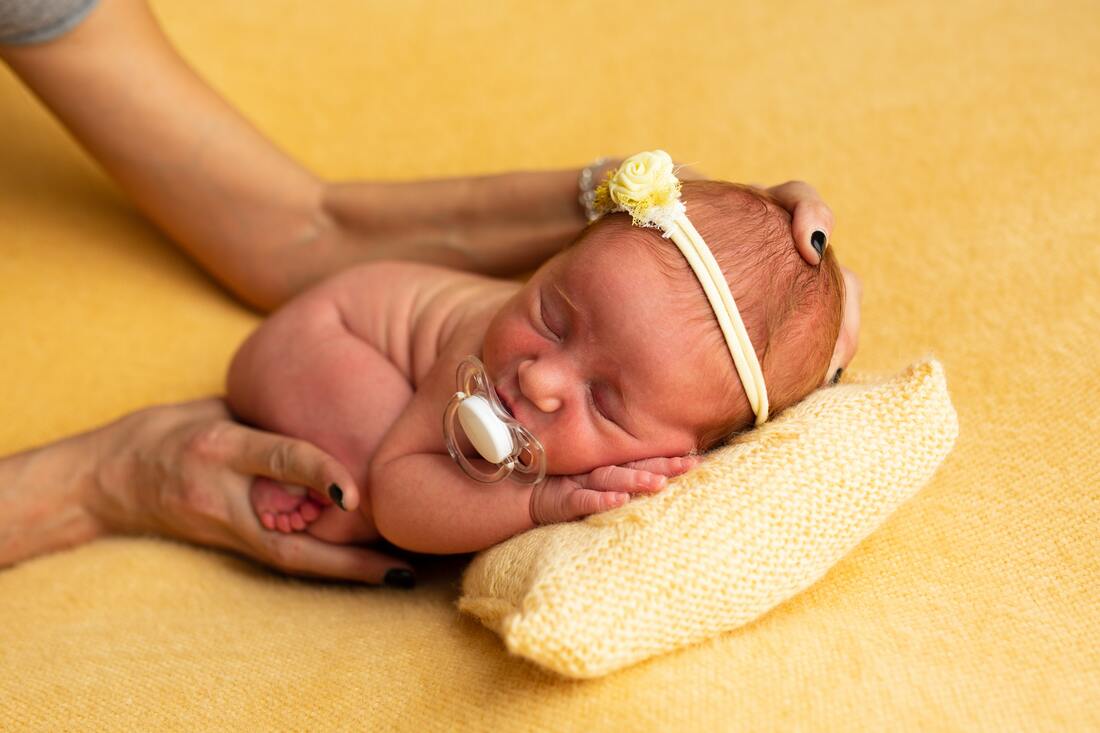 In this era of economic uncertainty, many parents searching for sleep training help for their toddlers, babies and children are coming up with creative ways to help pay for all of that support and assistance to get their children sleeping all night. Working with an experienced, knowledgeable pediatric sleep coach can be a big financial commitment. Hiring a sleep consultant or sleep trainer can be costly depending on the sleep consultant’s experience and services offered, so make sure you now exactly what you’re getting for your money. Since I trained as a sleep consultant 8 years ago, it’s become much more common for parents to seek assistance with sleep training, yet insurance companies haven’t quite caught up and cover it along with other insurance benefits such as lactation consultants and chiropractors. One avenue parents have researched is how to get their medical insurance to pay for it. Now it's not guaranteed that insurance will pay for sleep training but it’s possible you can use your flexible spending account (FSA) or health savings account (HSA) to pay for it. I’ve had a few clients come back to tell me they successfully had my services paid for by their insurance. Get Pre-Approved First, check with your individual insurance carrier to see if they cover Sleep Services, Newborn Care particularly out of network Sleep Consultants. make sure that you find out exactly what you'll need in order to be paid. Sleep Consultants are considered alternative, out of network therapies, thus requiring parents to pay upfront and be reimbursed by their insurance company. Make sure that you check with your carrier to see if they cover it. Determine the Required Documents Your insurance company should be able to tell you exactly what paperwork is required, such as a detailed invoice, dates of service, exactly what services are being utilized or diagnosis code. How to Pay for a Sleep Consultant You may need to pay upfront and be reimbursed, or use your HSA debit card to pay. Either way, you’ll get a detailed receipt that you can send back for reimbursement. Finding a sleep consultant near you that fits your family both in personality, their services and support can be a big financial decision and families should explore alternative routes. And if you are not able to get your health insurance to pay for a sleep coach or consultant, there are a few other alternative routes including crowdsourcing, gift certificates and buy now- pay later options as well. If you find a sleep consultant that you really want to work with and feel they believe the service they offer is worth it, look at different ways of paying for it so that you and your child can get to sleep that you need. 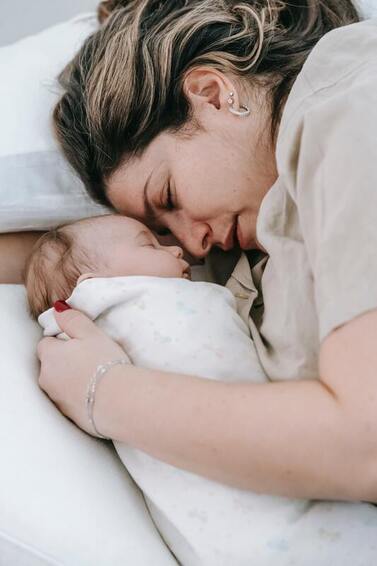 From Southeast to Northwest DC, moms across the city are juggling it all... work, homelife, their children and particularly, their sleep routines. And when their toddlers and babies aren't sleeping, neither are they. The toll sleep deprivation takes on a mother and her family is far reaching... everything from missed deadlines at work and trying to get a baby to nap when the virtual work-from-home meeting is starting, to having little to no time in the evening to spend with a spouse, work on house chores or just a little time alone. So if you're dealing with a sleep regression, popping in a binkie/pacifier multiple times per night or trying to decide which sleep training method is right for you, contact us and set up a free introductory call to ask any questions you like. 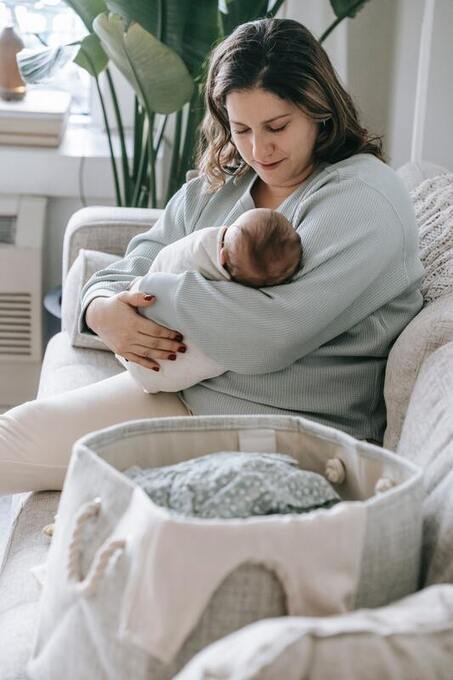 I had no idea what a sleep consultant was 10 years ago. I was leaving my corporate job because I was tired of working 60 hours per week, carrying 2 cell phones and never seeing my daughter. I knew I wanted to keep working and be able to spend more time with my daughter. Once I got my daughter sleeping through the night, I fell in love with getting proper sleep coupled with the idea of coaching tired parents to help their entire family sleep all night. I absolutely love my job! Getting to help tired moms and dads to get their family sleeping well is so rewarding when all of our efforts pay off. Maybe you have an interest in pursuing this work as well! Here’s how to become a pediatric sleep consultant. First, you need to take a pediatric sleep consultant course. There are a few different factors you need to consider when choosing a sleep consulting course. You’ll need to decide is if you’d like to take the course in-person or online/remotely. There has been a rapid rise in online courses over the past few years (thanks Covid!) that have made it incredibly easy to access sleep consultant training from virtually everywhere. However, if attending an in-person class is how you learn best, you’ll want to look for one near you. Costs vary from course to course and you’ll need to evaluate what you’re getting for your hard-earned money. Make sure you look at the curriculum of the course and the certification requirements. The next thing you’ll need to decide is if the course you are looking at has all of the information you’ll need to learn. To be a professional sleep consultant you’ll need to know all about the different sleep training methods as well as the science of sleep, what's normal for newborn, infant and toddler sleep, and have an understanding of the challenges to a child's sleep at different ages. Sound like a lot? Don’t stress. A course will walk you through each of these points and guide you on the journey to becoming a pediatric sleep consultant. There are many, many options out there for courses. If you do your research using the tips I’ve given you, you’ll be able to find a course that is just right for you. Or just ask and I'll provide you with my favorite courses. The last thing you will need to have is drive and motivation. Decide if you want to work on a team with another sleep consultant or want to start your own business. Each path has its pros and cons; if you want to start your own business, you’ll need to do things like create a website and social media presence, develop a marketing plan, handle bookkeeping and finances and work with clients. Working for another sleep consultant eliminates most of those administrative tasks and lets you focus on what you like doing, working with clients! If you want to have a rewarding side-gig or replace a full-time income, sleep consulting can be a great way to do that. Ask me how! Email me at [email protected] and let’s schedule a quick chat to answer any questions you might have. Happy learning! 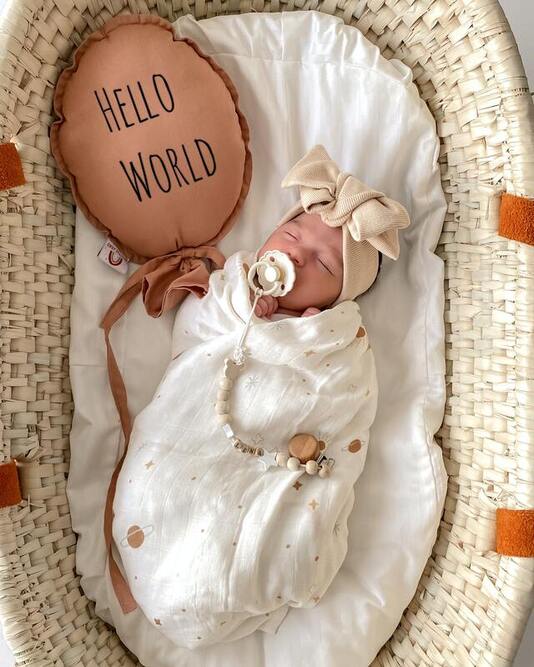 As technology continues to progress, there is always some kind of new flashy new baby gear that claims to make your baby sleep. Registries grow and become more complicated. The choices are never ending! New parents find themselves torn over which items to buy that will give them the *most* success to get their newborn sleep. With all of the new, advanced sleep options for baby, it’s important to consider long and short-term goals before rushing to purchase the newest baby gear. Every newborn should have a bassinet, crib, portable crib, or baby box as their own sleep space. Following Safe Sleep guidelines reduces the risk of sudden infant death syndrome (SIDS). But have you heard of the Snoo bassinet? The Snoo is a bassinet made by the company Happiest Baby that comes equipped with sound sensors, wifi, white noise speakers and a robotic motor that rocks your baby to sleep if your baby makes noise. Sounds incredibly fancy, right? All of that sleepy time magic comes with the price tag of $1,600. You also have the option now to rent a snoo near you at a cost of $500 per month! That's on top of all the extra baby gear you have to buy, including a car seat, stroller and most importantly...lots of diapers! Parents frequently ask me my opinion of the Snoo and overall, it's a great tool...until baby grows out of it. I have worked with many clients that started out working with me when their baby was in the Snoo and we successfully transitioned to a crib. All the babies are sleeping well…now. Here are a few things you should consider before jumping in to buy or rent a Snoo. How does the Snoo work? The Snoo is an all-in-one bassinet and baby soother. It gives you the smaller space required to have your newborn sleep in your room without taking up much space, has white noise and rocks your baby to sleep. So, does it work…in short…yes! But only for a limited amount of time. Online reviews rave about how well the it rocks your baby back to sleep. Having the bassinet do all the work for you sounds amazing! The added sound machine and the included swaddle are both accessories of the Snoo, eliminating the need to get these separately. The biggest downside to the Snoo or any motion bassinet is the creation of a dependency on motion to get your child to sleep. When baby outgrows it around 4-6 months of age or simply is too big for it, you’ll need to transition to a full sized crib, mini-crib or portable crib AND you’ll need to work on getting baby to sleep without motion or rocking. What’s the cost of getting a newborn to sleep? This first thing that jumps out at me when considering the Snoo is the price tag. $1,600 for a bassinet?! However, as a sleep consultant, I truly believe that good sleep is priceless! Consider this; a bassinet is not forever, it’s a good tool to use for a few months of life. While a crib can be used for several years, a bassinet is typically used for about 4-6 months (and that’s if baby doesn’t outgrow it sooner!). All things considered, your baby will be using this bassinet for roughly 180 days. And once baby outgrows the Snoo, you’ll still need a full sized crib! For some, it’s a great tool, for others they might want to get more bang for their buck. Will I still have to sleep train if I use the Snoo? If you think of falling asleep like a skill that we have to learn, then yes, you will have to eventually teach baby to fall asleep without the motion of the Snoo. For instance, if a baby is constantly being rocked to sleep by a bassinet, they form a sleep habit. Once it comes time to transition from the Snoo to the crib, then this habit will need to be changed in order to teach baby how to fall asleep without the motion. The transition may prove to be harder than it would be with a standard bassinet or portable crib and parents should consider if this challenge is worth it. For some babies, the change from the Snoo to a crib can be hard and will require some prior planning to manage the transition. Weaning and transitioning from the Snoo can be done cold turkey but parents should consider gentler methods to do it as well. So what should you do? Consider cost, length of use and your desire to avoid sleeping training later before purchasing or renting one. If the cost isn't worth it or you don't see long term benefits of using it, consider introducing healthy sleep habits early on. No matter what bassinet you use, you and your baby CAN achieve good sleep. By doing a bit of research and weighing out the options, you and your partner can make the right decision for your family. What about you? Have you ever used a Snoo? What are your honest reviews? I would love to hear your thoughts! And if you’re not sure how to transition out of the Snoo, please reach out. Happy sleeping! 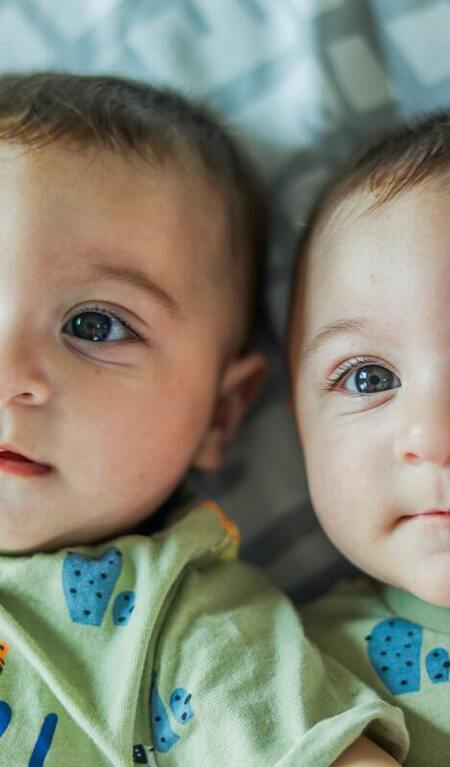 Twins! Twice the fun and double the love. With any baby, sleep training can be hard. As a parent of twins, it can seem downright impossible. But sleep training twins can be successful with a few tips to get you started. The biggest thing to consider when getting ready to sleep train twins is their adjusted age. Chances are, when your babies were born, they were not full term. This means they have a bit of catching up to do developmentally before they’re ready to form the best sleep habits. If you’re calculating their age based on the day they were born, you may be attempting to sleep train before they are ready. A big misconception that I hear often is that sleep training requires letting your baby cry it out. This can make a twin parent cringe! How can you let one baby cry it out with the other one trying to sleep nearby? The cry-it-out method is not the only sleep training method you can use. Look into other methods such as the pick up/put down method or the chair method (which could potentially be used for both twins at once!). In addition, if one baby is sleeping better than the other, consider having them sleep in another room temporarily while you train their sibling. Twins tend to be on the same routine once it’s established, but getting there may take some work. Listening to your baby's cues also helps immensely. As new parents, we often feel the need to document everything and feed on a schedule. During the night time, let your babies sleep and only feed them if they wake! This may seem pretty obvious, but if your baby is gaining weight as they should be, get the sleep while you can and let them tell you when they’re ready to eat again. Lastly, as a twin parent, celebrate your successes no matter how small! You are working so hard and any steps you make towards better sleep should be recognized. Dropped a night feeding? Hooray! Got both babes to self-soothe? Boom! Give yourself a pat on the back. I want to know, have you trained infant twins? What tips and tricks worked for you? I want to take a minute today to unpack a question I get asked a lot as a sleep consultant; when is the best time to sleep train my baby/toddler?
The answer to this question varies for everyone, but it has to be when you’re ready! If your baby or toddler is sleeping well all night, you and your spouse/partner are sleeping 7-8 hours at night and you love your situation, then rock on! If you’ve decided that your situation is no longer working for you, you’re not getting enough sleep, your child is up half the night and everyone is sleep deprived, it might be time to change what you’re doing to improve your child’s sleep. Here are a few guidelines you need to consider before starting any sleep training method. When your child is healthy If your baby or toddler is having a hard time sleeping due to a cold or illness, it’s not a good time to start making changes. We want to give our child the best circumstances to succeed at sleep training, so wait until they are physically feeling their best. This applies to teething babies too or babies who have recently received vaccinations. When you have a plan A big mistake parents make is jumping into sleep training without having a solid plan of how they’re going to do it. Have you decided what method you’re using? Do you know what to do in different situations? What boundaries have you set surrounding sleep training? Are you and your partner on the same page? Make a plan together to make sure you are on the same page and can support one another through this transition. Make sure that you and your partner/spouse are clear in your roles and how you’ll handle things such as getting your little one to fall asleep, night wakeups and naps. When you are ready to commit Babies and children learn through consistency and routine. Make sure you are ready to make changes to your current sleep routine and you can commit to a sleep training plan for at least a few days. If you’re not ready, no sweat! Wait until a time when both you and your partner can fully commit together. Have you experienced failed attempts at sleep training? Did you try sleep training on your own and it didn’t work? What aspect of sleep training doesn’t seem to be working for you? Reflecting on past experiences using these guidelines can set you up for success in your sleep training journey. And if you need any help answering your questions, set up a free call with me to help pinpoint the issue and determine the steps you need to get your kiddo sleeping all night long. Happy sleeping! By Evie Ebert 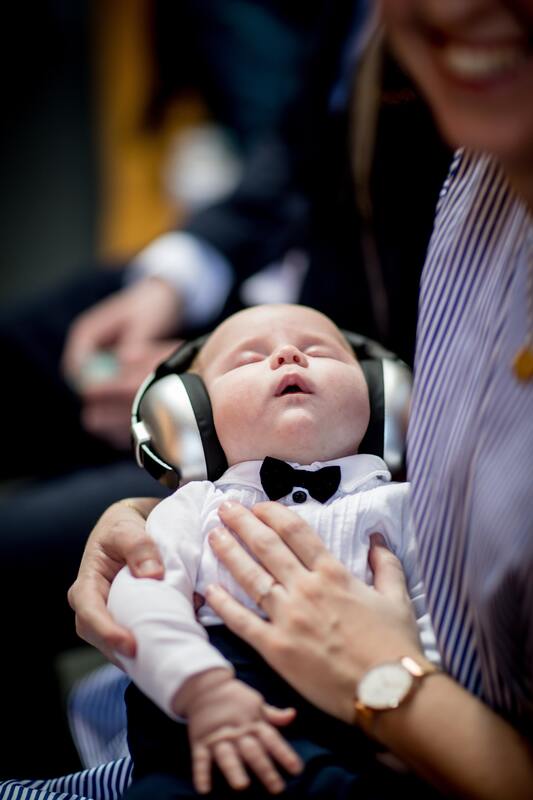 Tired parents are desperate to get their kids to sleep. There’s a whole industry designed to help (for a fee). I remember when I reached my breaking point with my son’s sleep. He had faced big changes to his little life over the previous year: an interstate move, a new house, a new preschool, and the arrival of his baby sister. His routines suffered for it, and his bedtime demands had become increasingly baroque and desperate. If my husband or I didn’t stay in the room with him until he fell asleep, he would explode with panic. “I’m all alone and I’m only 3 years old!” he wailed through a sheet of tears and mucus. If we left the room, he hurled his body against the door like a moth thumping a porch light. This particular night, my husband was out of town, leaving me solo with both kids. Hours since I’d gotten him in his jammies, my son was still awake and his protests were threatening to wake the baby. This risk was unacceptable. I pulled him out of their shared bedroom and into “the big bed” with me. The lights were off but his little overtired body wouldn’t stop twitching and jerking with excitement. As his heels jabbed at my ribs (“I’m just stretching”), I directed my phone’s glow away from his face and fired off a deranged missive via online form. Christine emailed me back the next morning. “One of the top times that I get emails from tired parents is somewhere between midnight and 2 am,” says Christine Stevens, who owns Sleep Solutions by Christine. Stevens is a certified child and infant sleep consultant, a professional who offers services to families struggling with behavioral childhood sleep problems. She is one of the growing league of such professionals around the globe, a cohort of providers who fill this need for exhausted families. |
Categories
All
|
